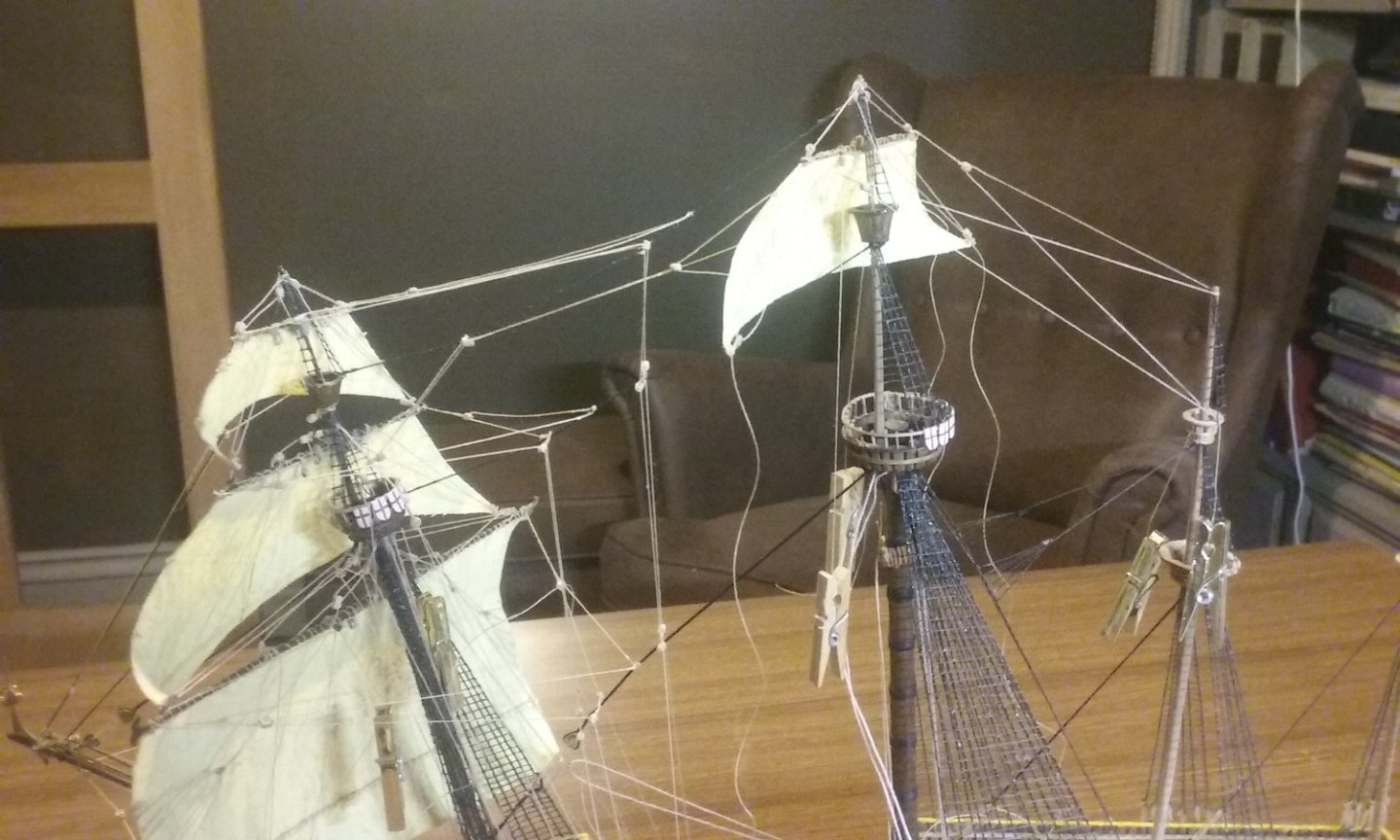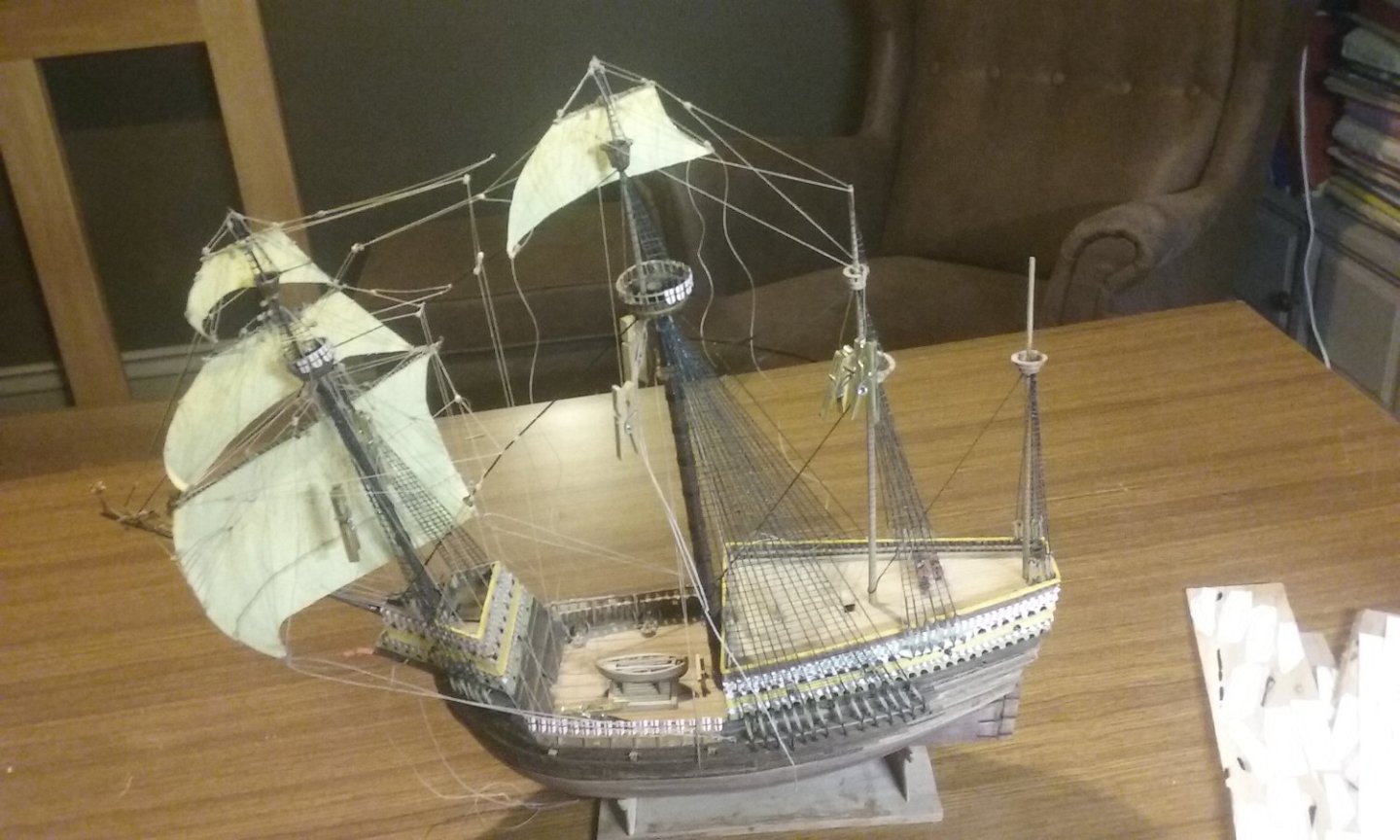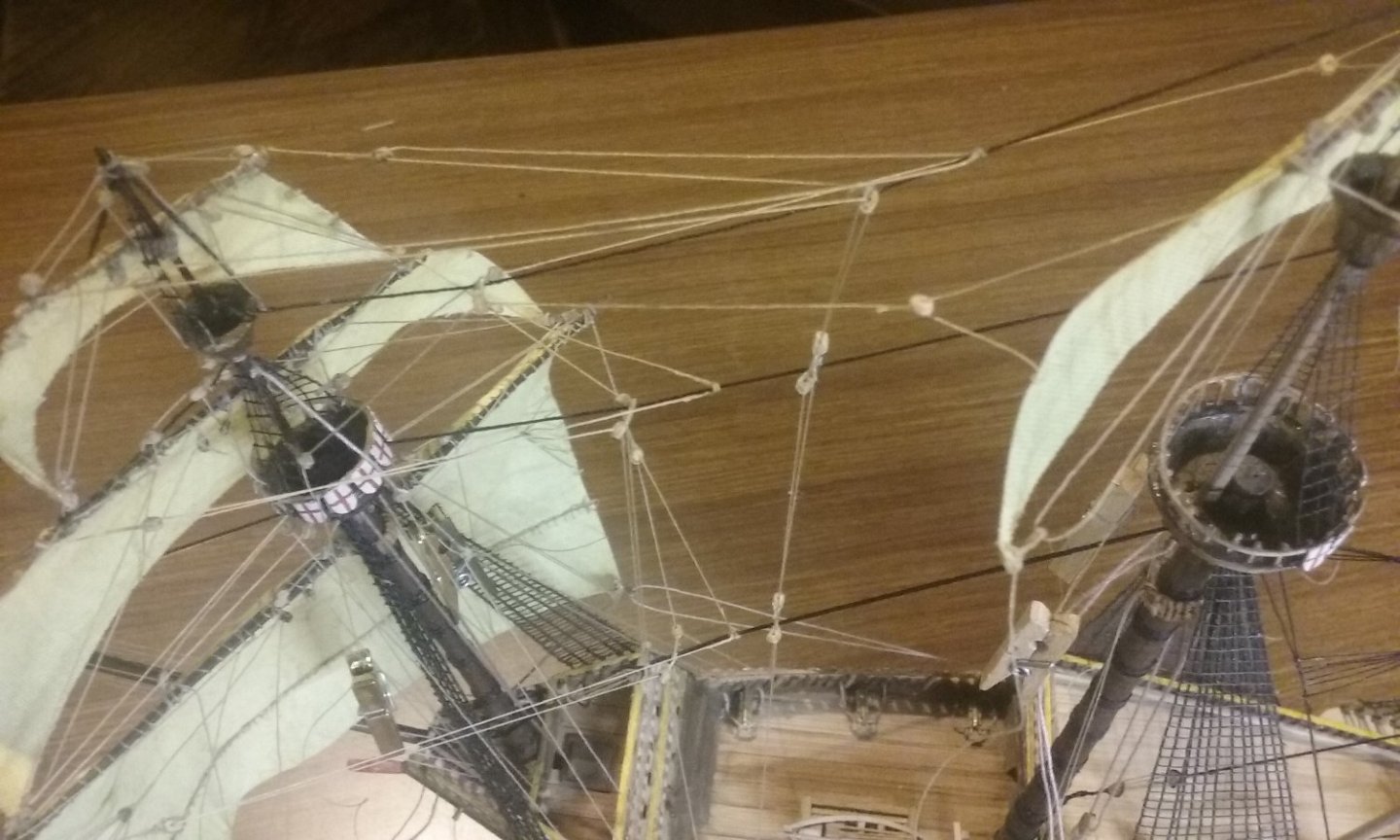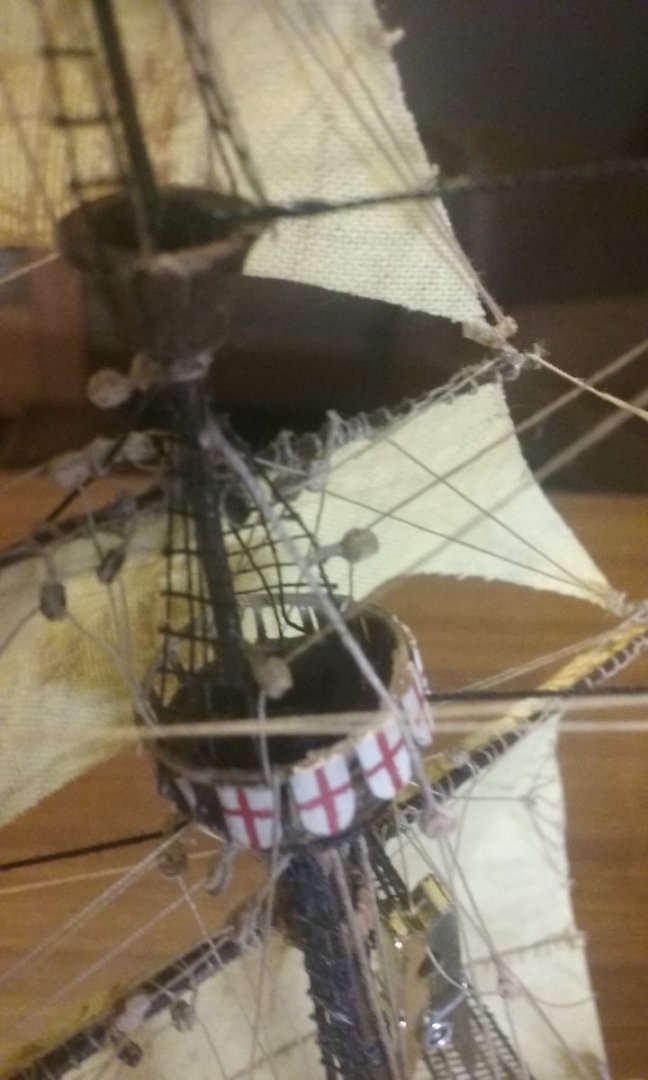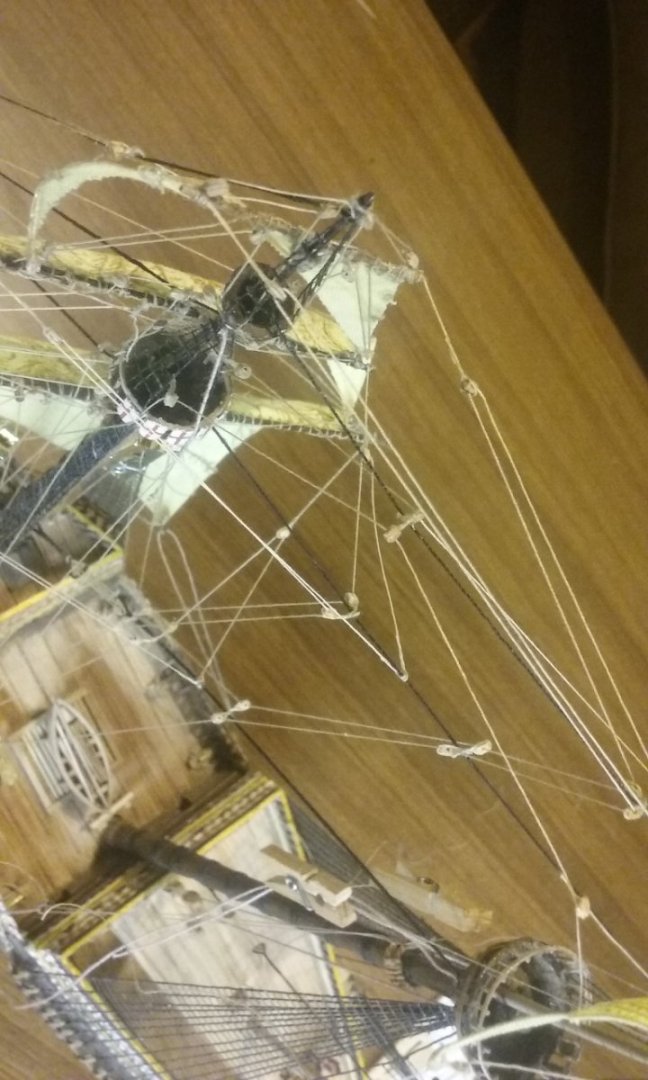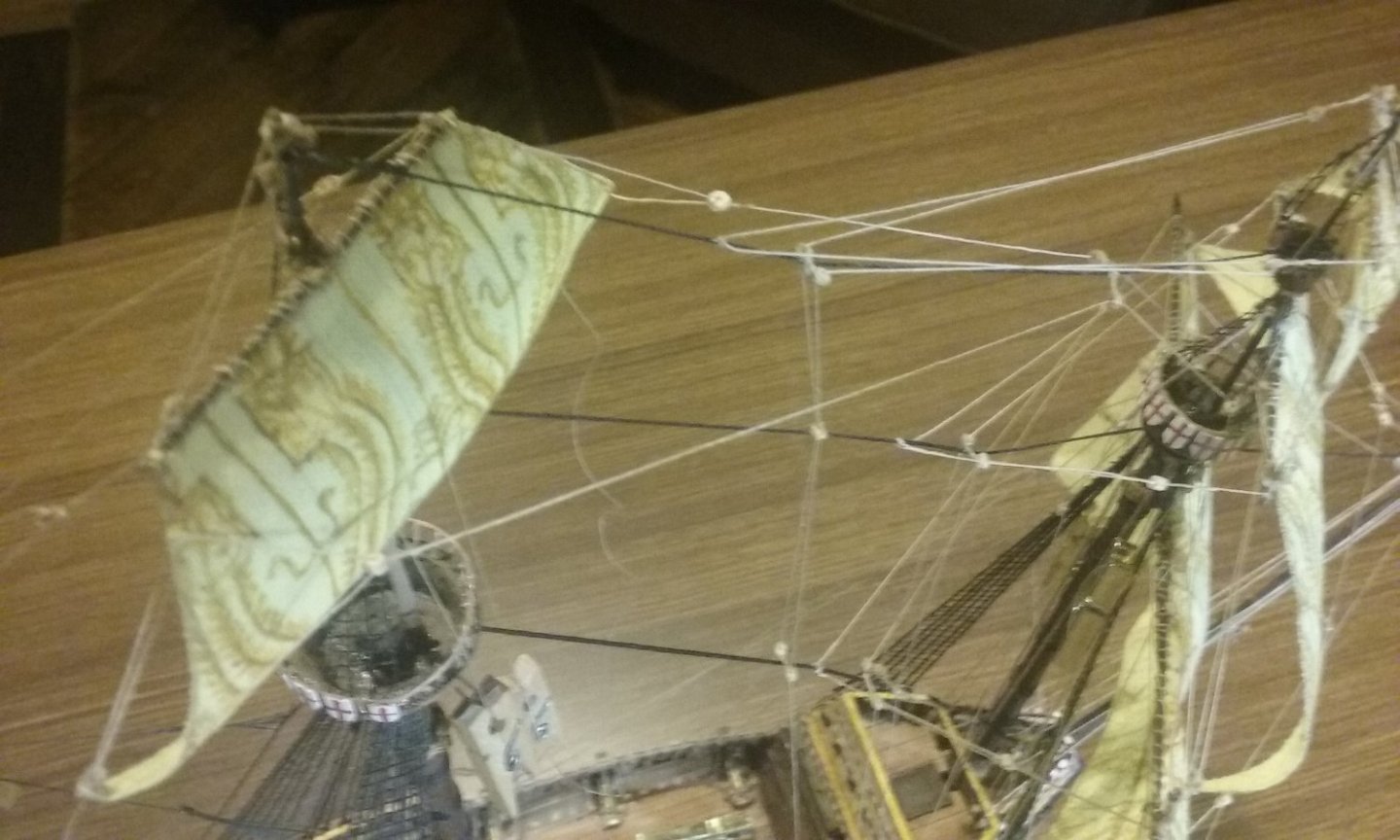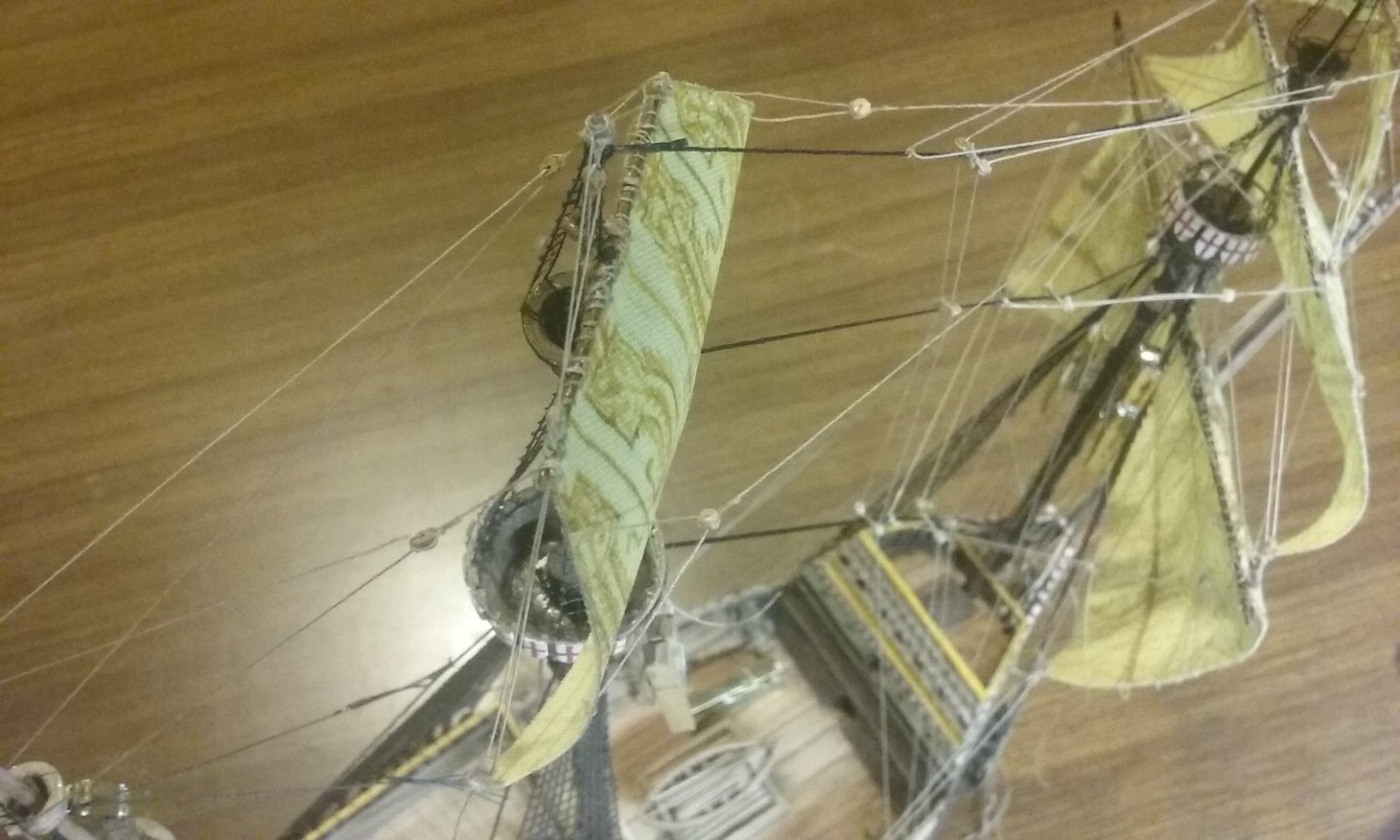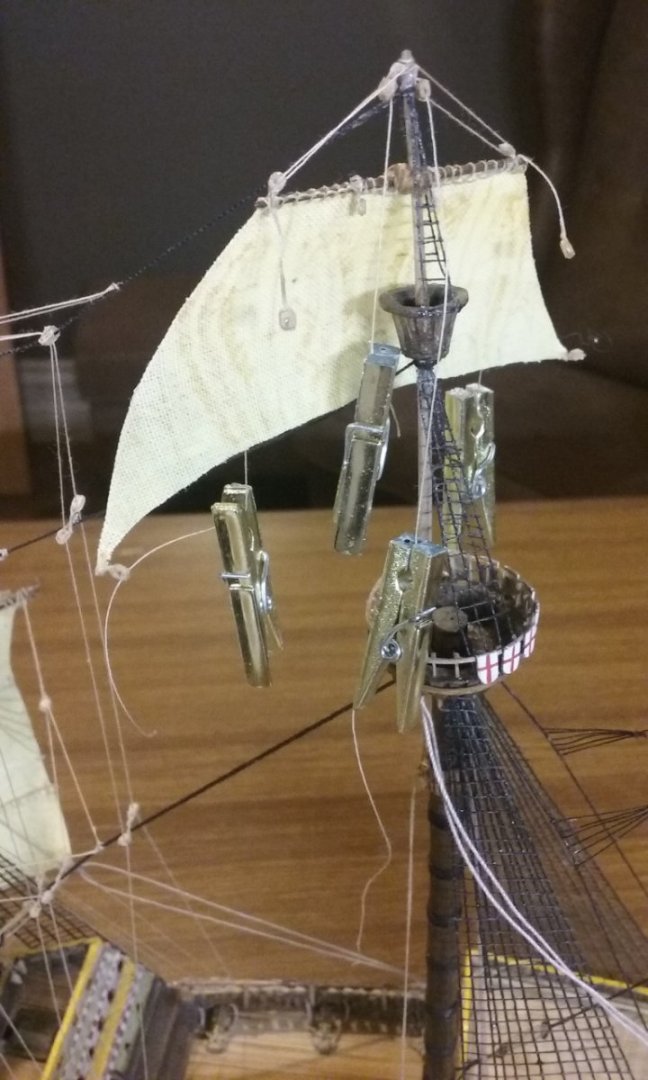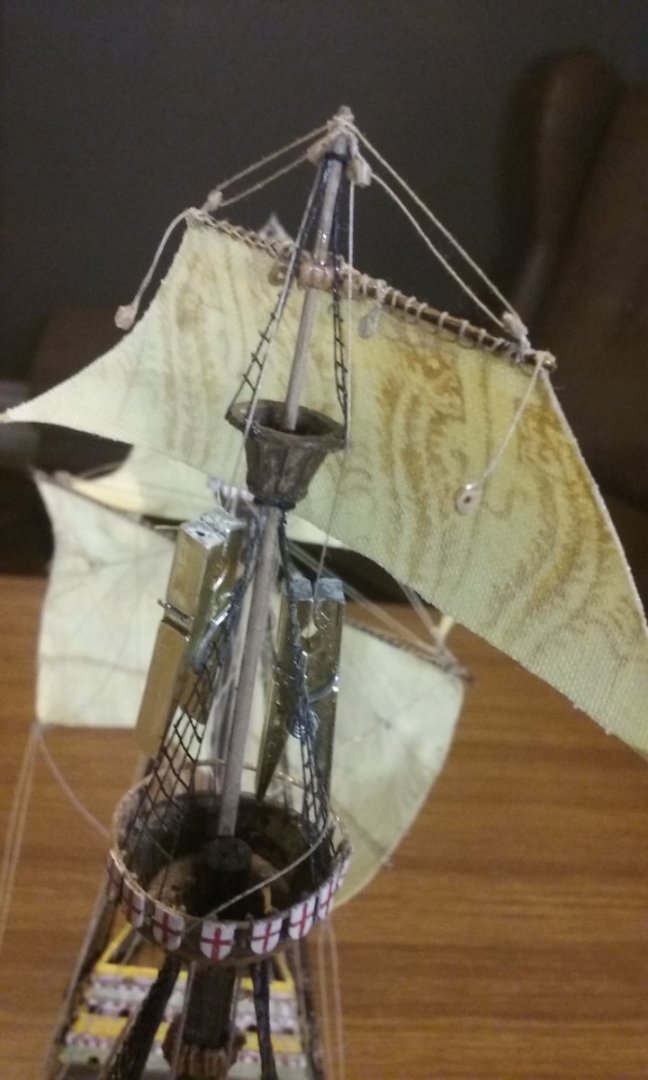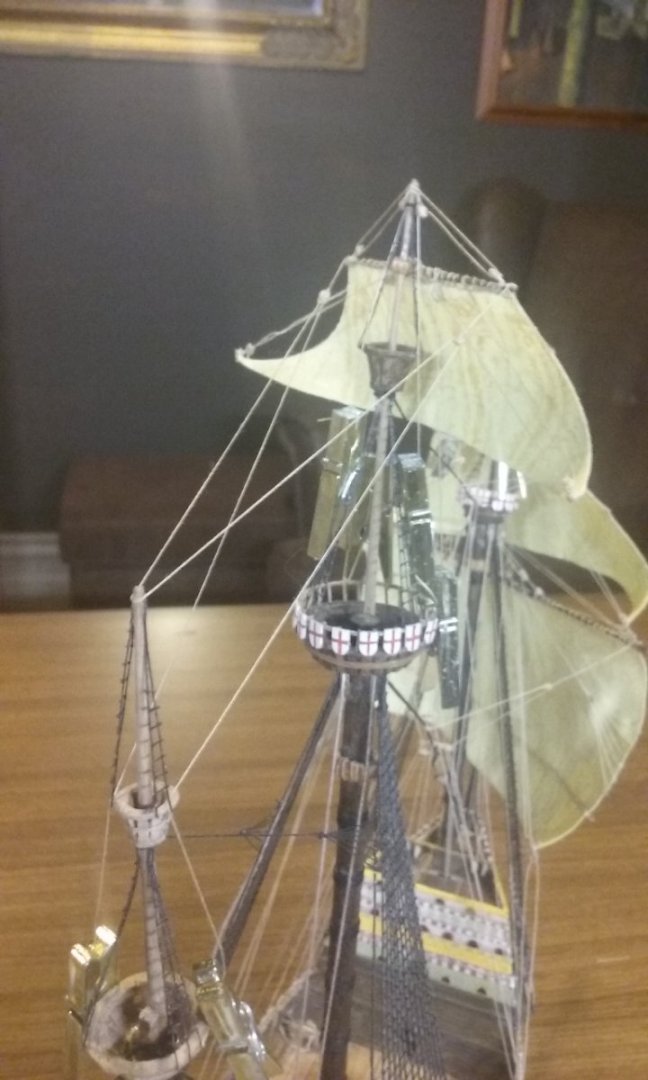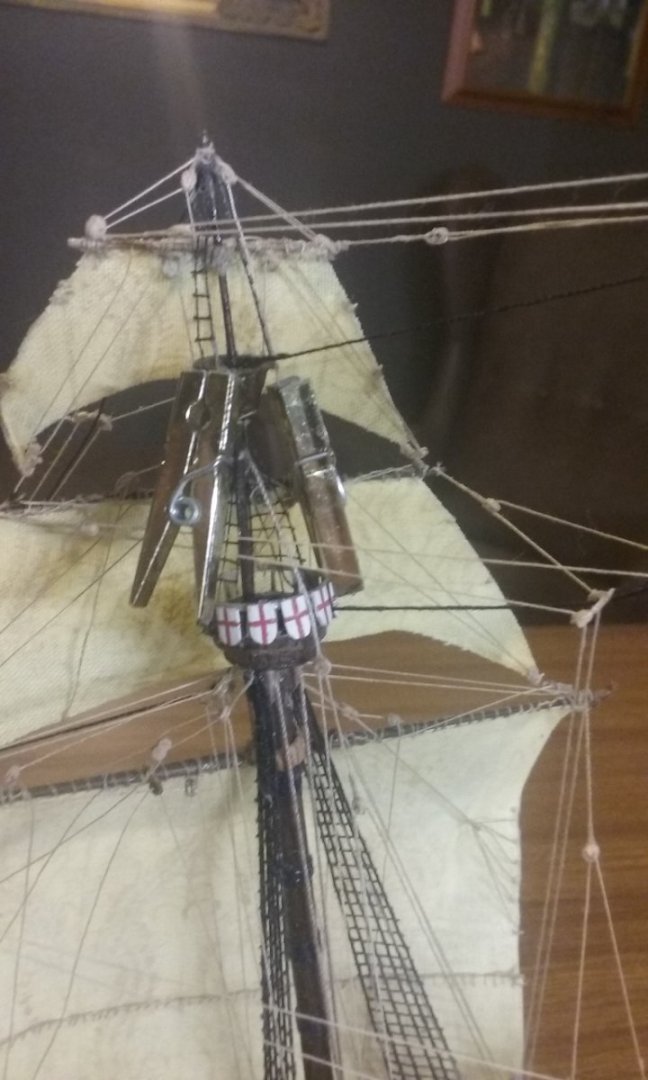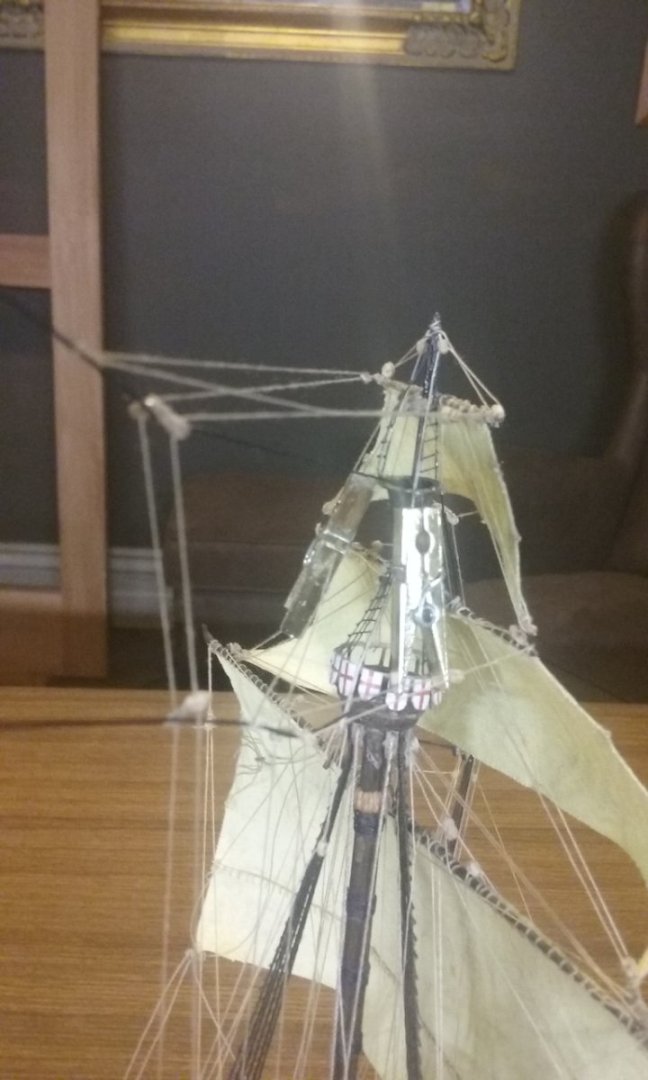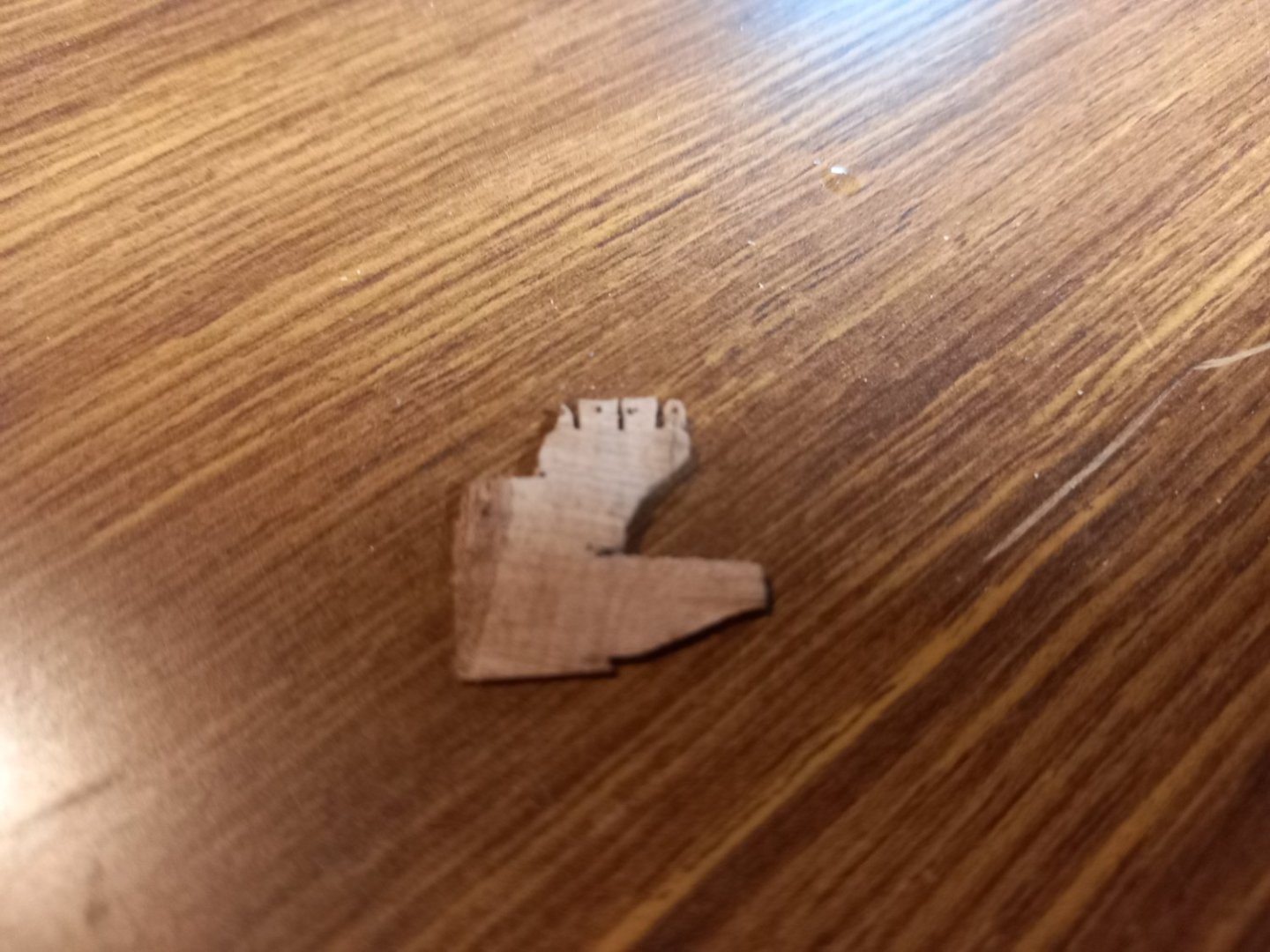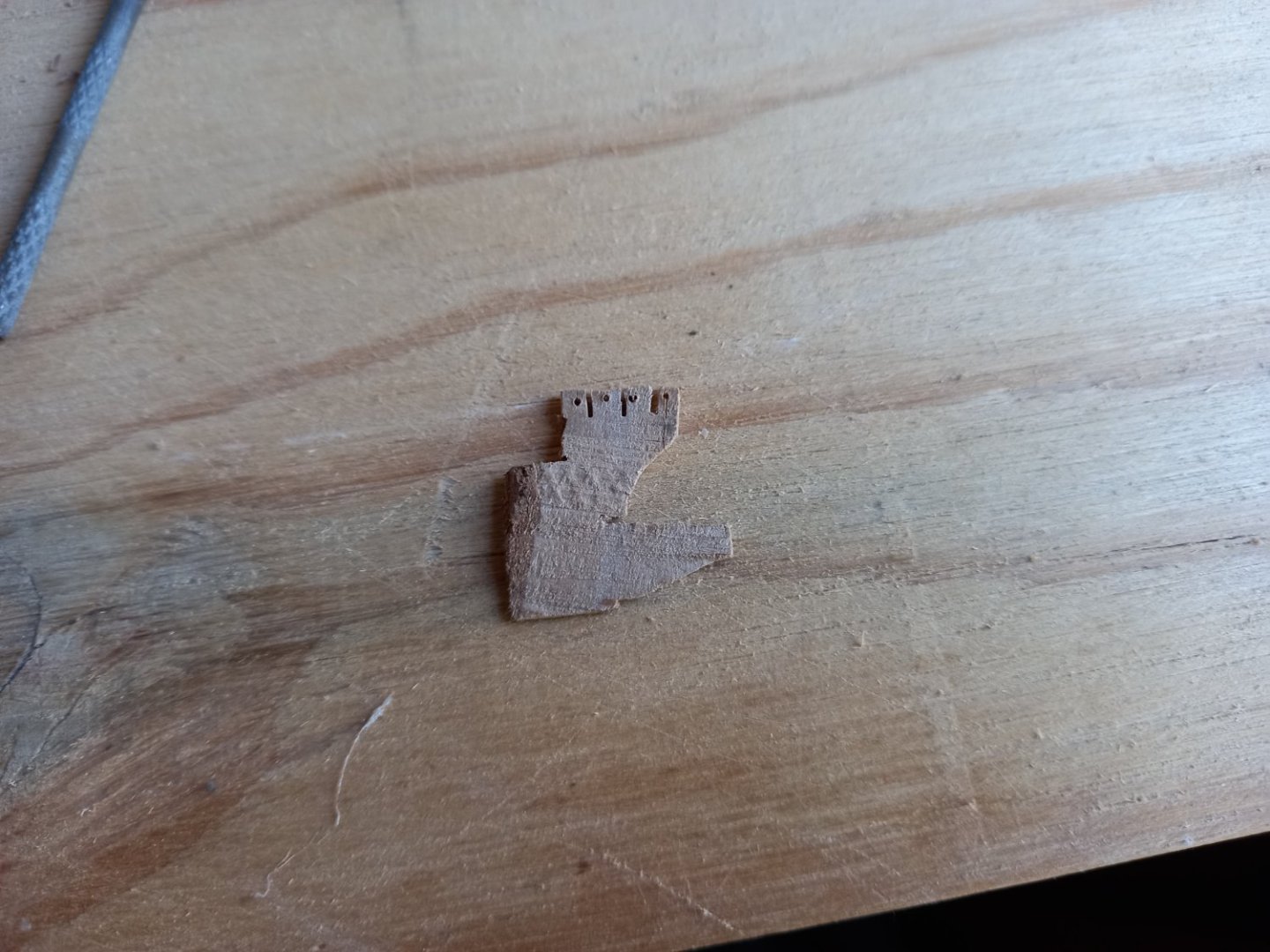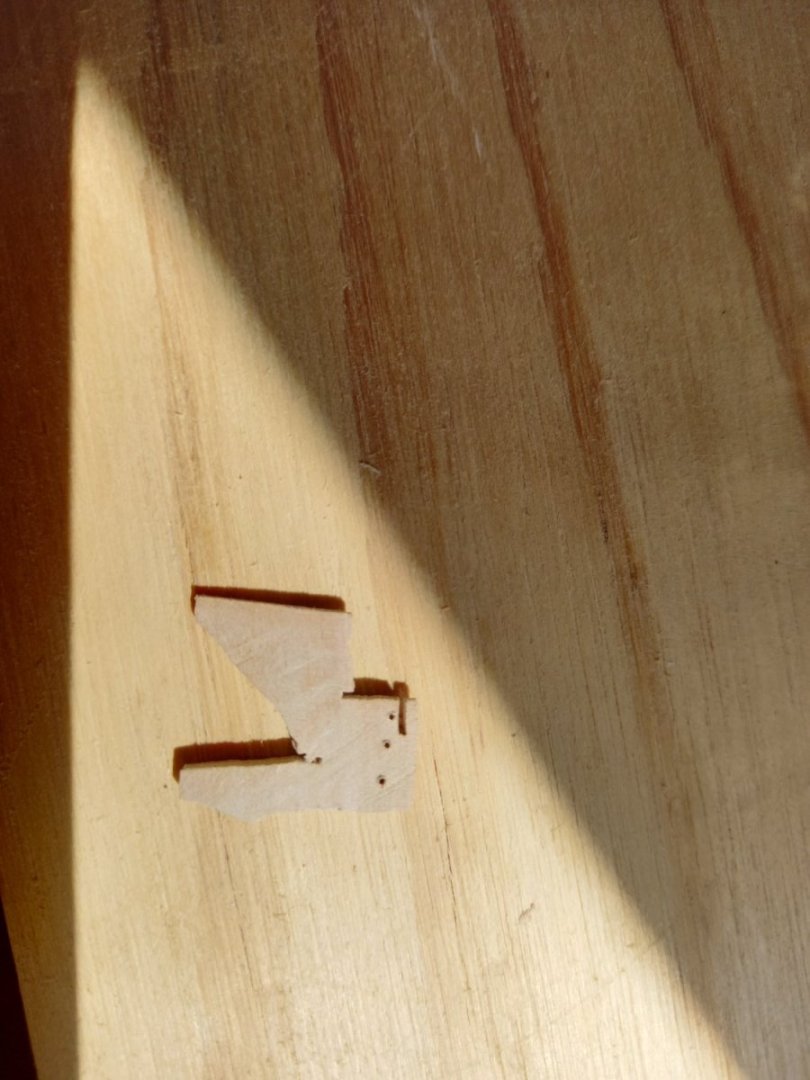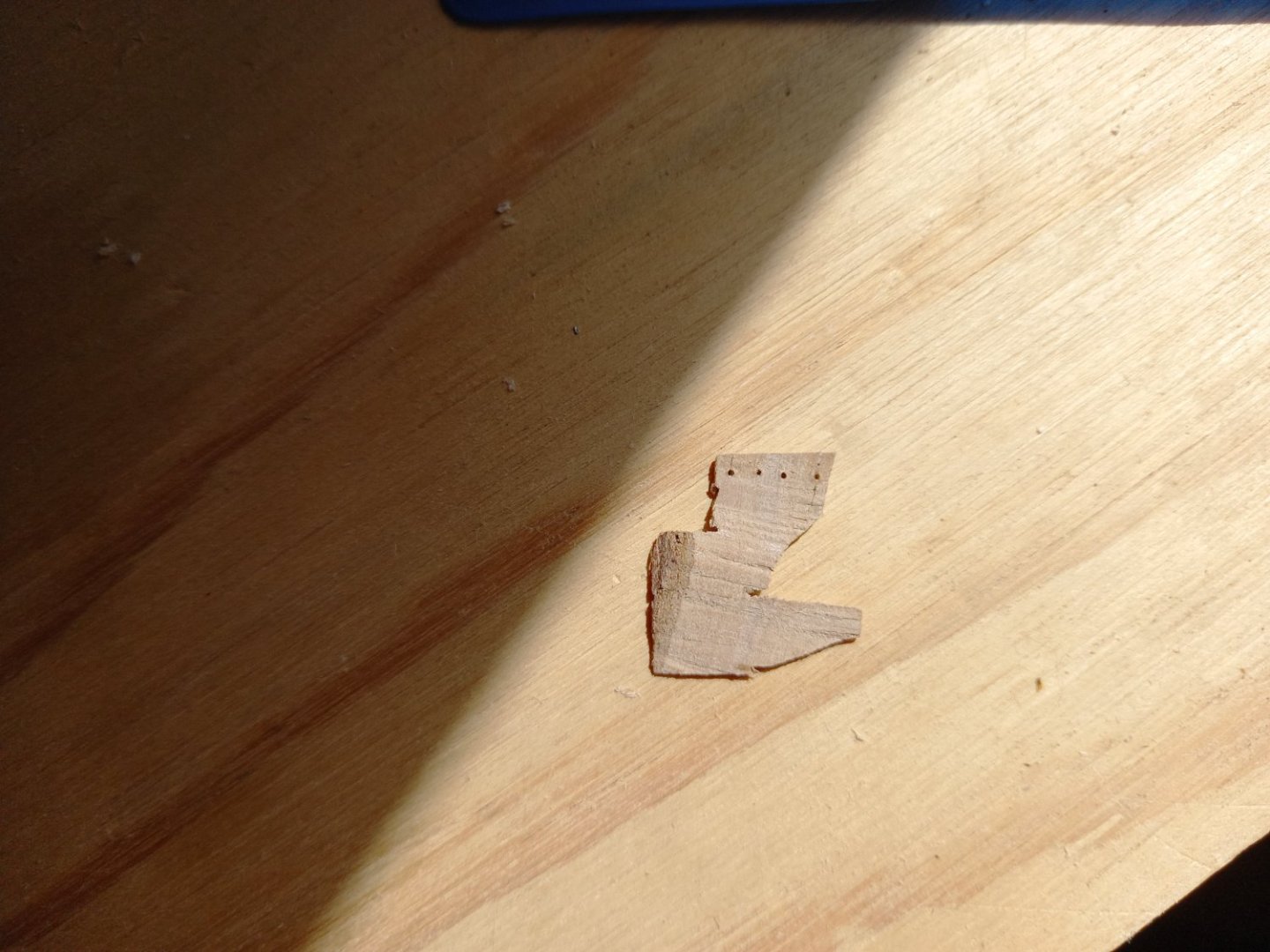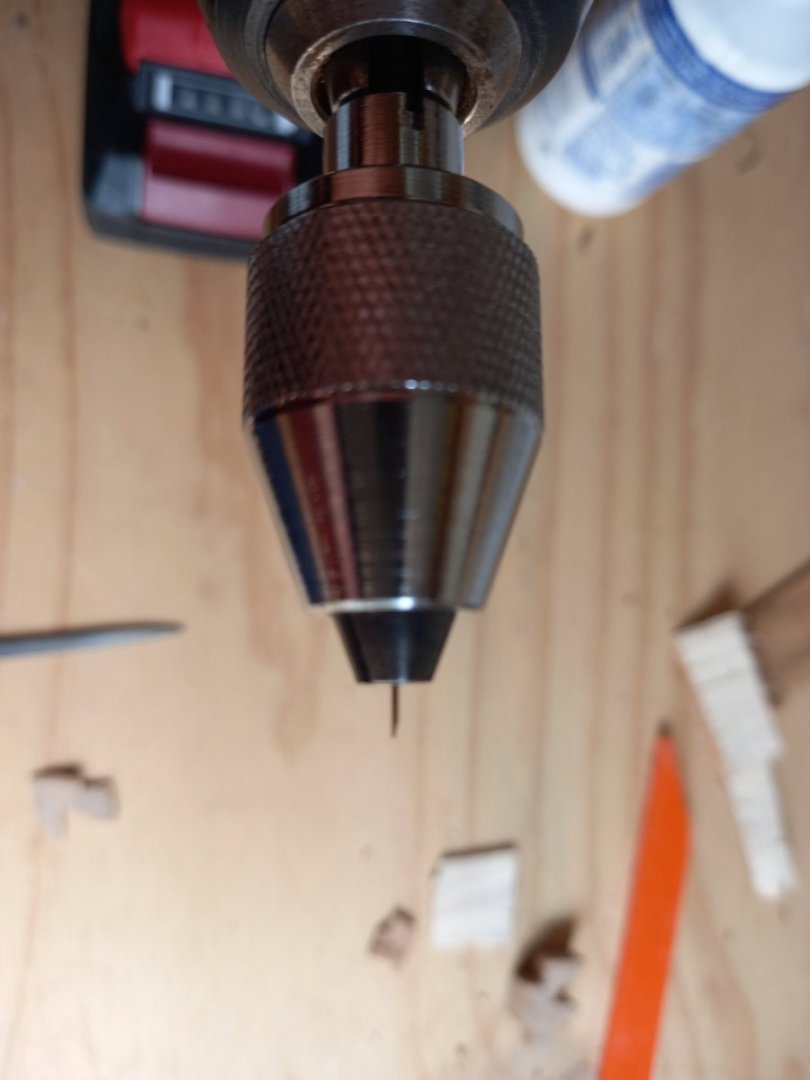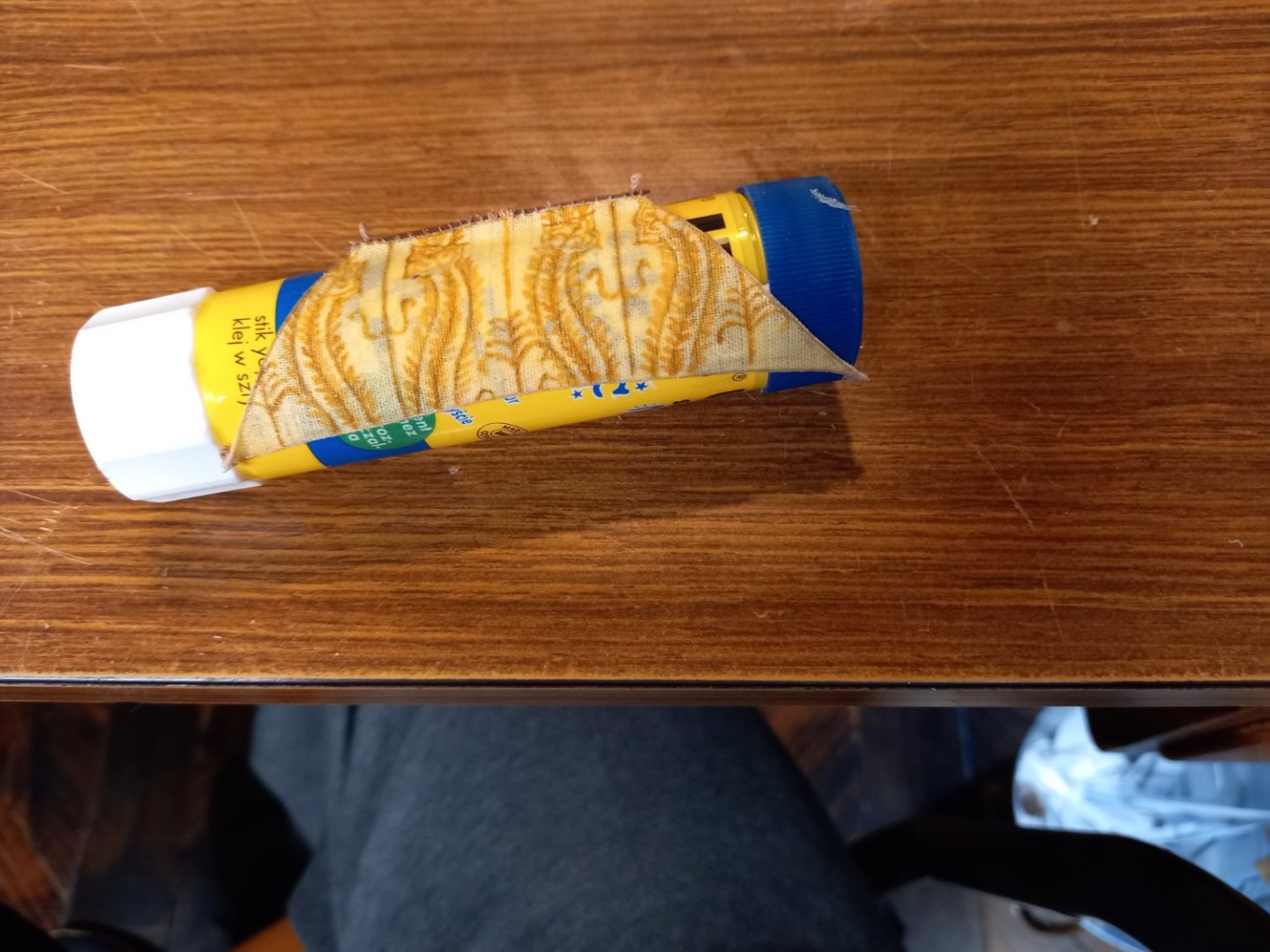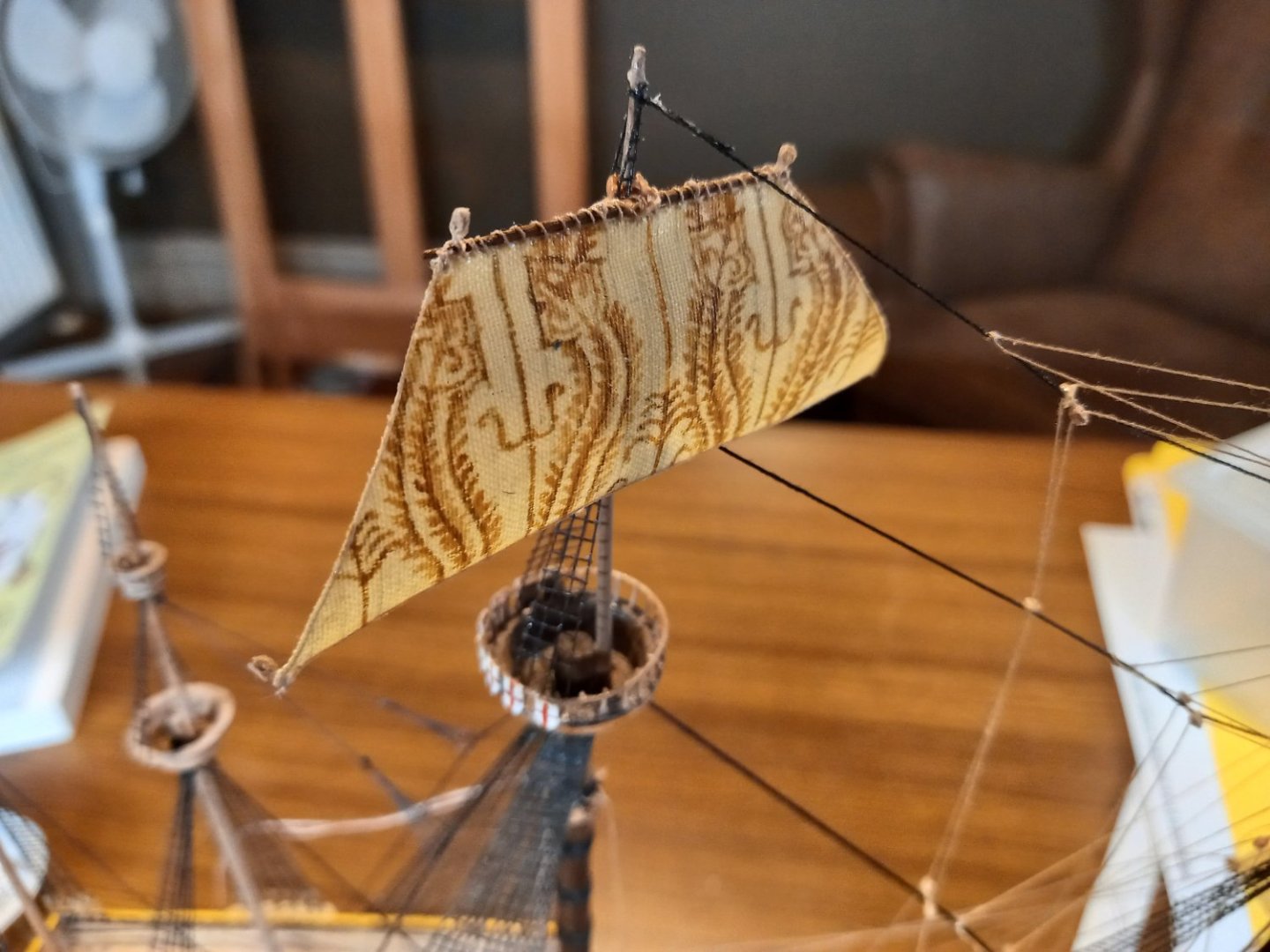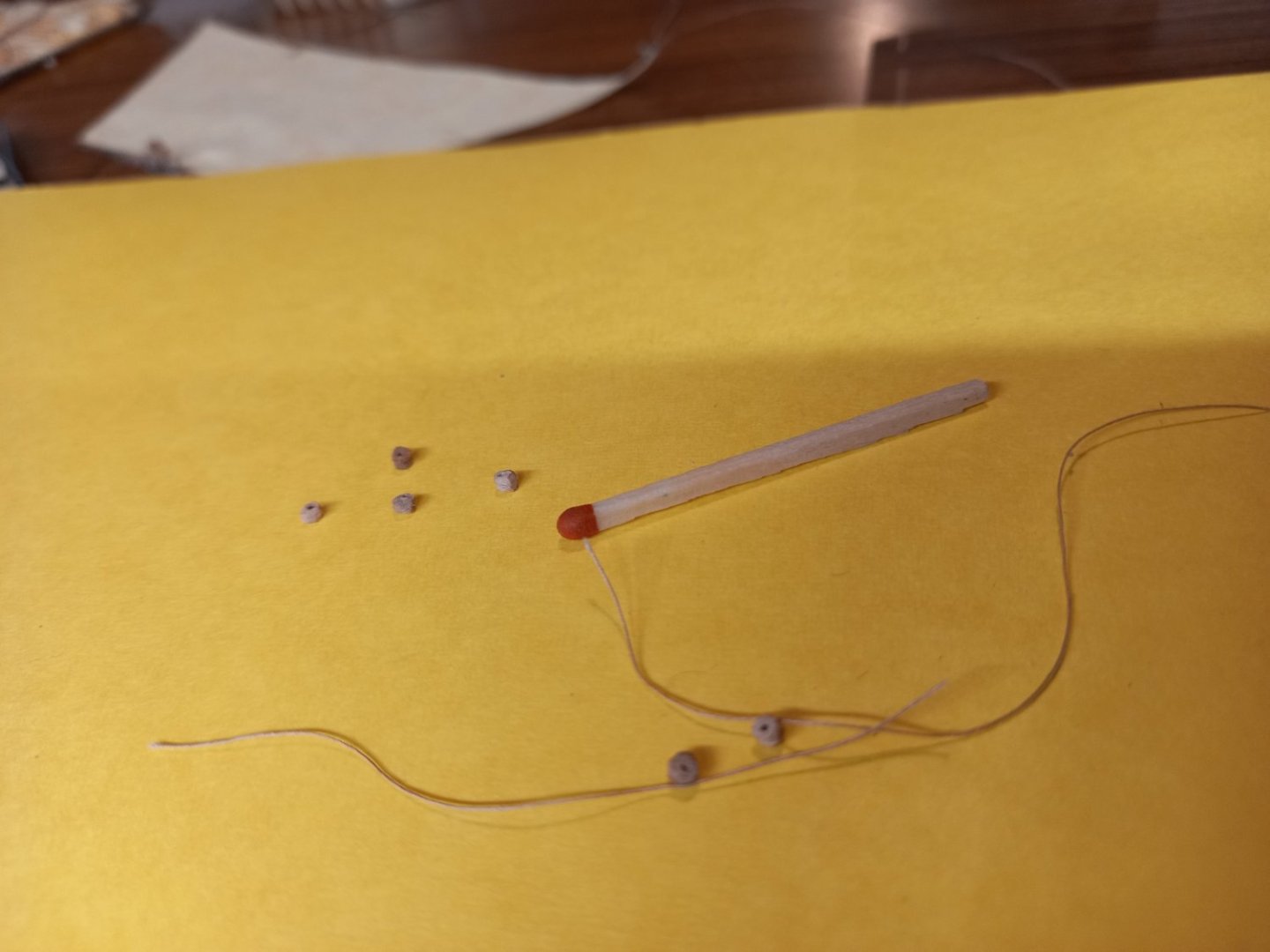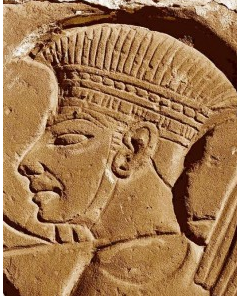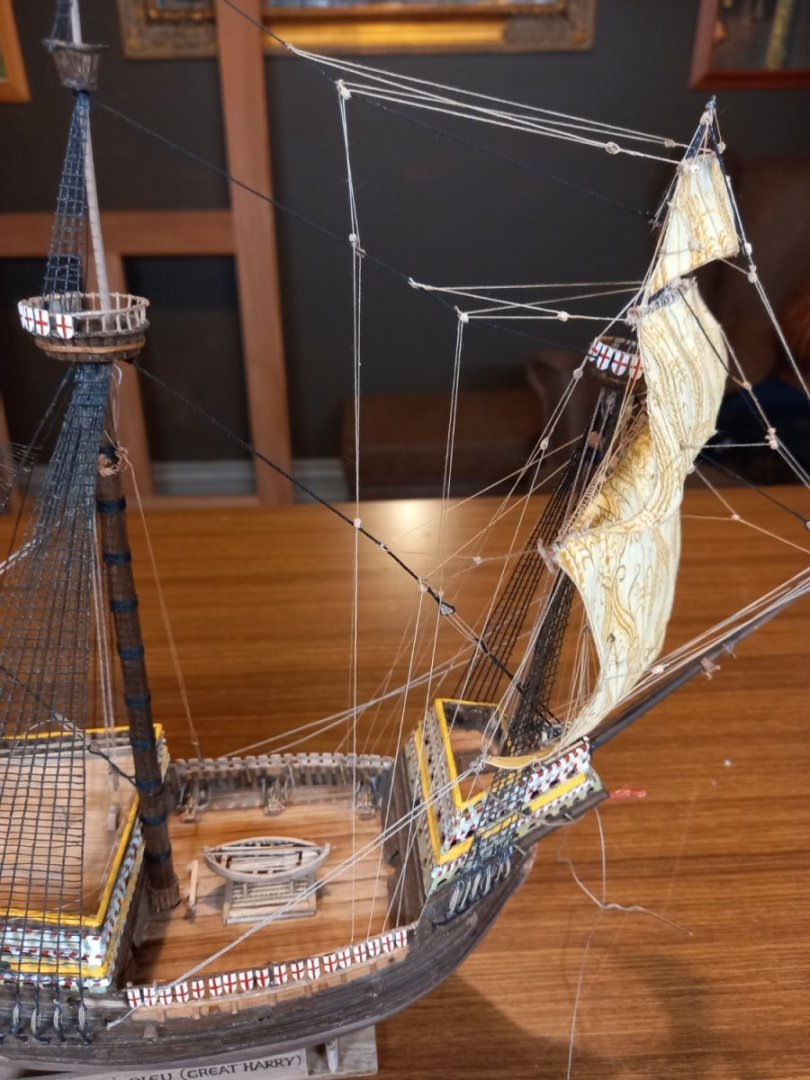-
Posts
7,984 -
Joined
-
Last visited
Content Type
Profiles
Forums
Gallery
Events
Everything posted by Louie da fly
-
I never fail to be amazed at how strong model hulls are - even though the planking is to scale thickness. Enjoying the ride. Steven
- 142 replies
-
I thought you might like to have some contemporary pictures of carracks to refer to in your build. I've divided them into vessels with a single mast (which I like to call "proto-carracks"), and those with at least two. The hulls seem identical: https://www.pinterest.com.au/lowe1847/proto-carracks/ and https://www.pinterest.com.au/lowe1847/carracks/ Steven
- 72 replies
-
Thanks, mate. But I have space limitations. Never going to do 1:200 again, but I've done 1:50 and 1:75, and I'll probably keep on with 1:75 as my "default" scale. And of course, if all the models are to the same scale you can compare them. Steven
- 740 replies
-
- Tudor
- restoration
-
(and 4 more)
Tagged with:
-
Sounds like you're speaking from experience, Druxey. I fully concur, having done a very comprehensive renovation myself. Can of worms territory! Steven
- 740 replies
-
- Tudor
- restoration
-
(and 4 more)
Tagged with:
-
Thanks, Firdajan. Unfortunately when I first started the model I had no idea what problems the small scale was going to make for me later . . . Steven
- 740 replies
-
- Tudor
- restoration
-
(and 4 more)
Tagged with:
-
Old fat spider spinning in a tree! Old fat spider can’t see me! Attercop! Attercop! Won't you stop, Stop your spinning and look for me? Old Tomnoddy, all big body, Old Tomnoddy can’t spy me! Attercop! Attercop! Down you drop! You'll never catch me up your tree! Lazy Lob and crazy Cob are weaving webs to wind me. I am far more sweet than other meat, but still they cannot find me! Here am I, naughty little fly; you are fat and lazy. You cannot trap me, though you try, in your cobwebs crazy. (Bilbo's song, from The Hobbit) Some more cobwebs - main topgallant bowlines, running via blocks on the main topgallant stay to blocks on the fore topsail shrouds and belayed to the upper fore top. And sheets on the main topgallant sail. Now I'm ready to add the main topsail. Steven
- 740 replies
-
- Tudor
- restoration
-
(and 4 more)
Tagged with:
-
Now putting those blocks to use. The main topgallant lifts and pendants for the braces: Main topgallant braces and clewlines: They are currently only held in place with weights (those tiny clothes-pegs) until I finalise how all the ropes interact with each other, so they're all tight at the same time (I hope!) And I had another go at the lifts for the fore topgallant, which were loose and crooked. They look better now. And instead of belaying them to the side of the top I've followed Anderson and belayed them to the topgallant shrouds. More to come in due course. Steven
- 740 replies
-
- Tudor
- restoration
-
(and 4 more)
Tagged with:
-
Fascinating work, Dick, but I must admit I'm a bit lost with the addition at the prow. Doubtless further progress will clear that up for me. Steven
- 142 replies
-
Glen, I've been carving the blocks from pearwood with a scalpel (No 11 blade). I drill a row of holes in a thin sheet of wood, (note the grain us running up and down the page in this photo), using a brass "sequin pin" which is just the right size to let cotton thread through the hole without making the block too big at 1:200 scale. One thing I have to do is put the holes far enough from the end so the wood doesn't split. I still ave problems because I'm using a hand drill, and the holes don't always go through at right angles. Better to use a drill press. The shortcuts are simple - set it up so I do as little carving as possible, as that's the most time consuming activity. 1. I cut the sheet as close as possible to the proposed thickness of the blocks. 2. I space the holes just the right distance apart, and 3. once they're drilled I cut the end off the sheet close to the holes so I don't have to carve it down, and 4. cut between the holes, (again, to reduce the amount of carving I have to do). 5. Then I carve the individual blocks to shape (the one on the right). It doesn't always work and the wood still splits too often (I'm pushing the wood to its limit), but that's the general idea. Druxey, that might be a better technique. I'll have to do some experimenting on a bit of leftover cloth. Steven
- 740 replies
-
- Tudor
- restoration
-
(and 4 more)
Tagged with:
-
Yes. I'm not sure if I should do it to all the rest of the sails, or leave the others as they are for consistency with those on the foremast (though of course having one sail like this and all the rest the other way isn't all that consistent either). I think I'll be able to form the glued-up sail to the final shape I want, once all the rigging lines are added, by wetting it and letting it dry in the new shape. Steven
- 740 replies
-
- Tudor
- restoration
-
(and 4 more)
Tagged with:
-
Well, finally back to work on the Great Harry after more than 4 months without my workspace (in use as a bedroom for a guest). I wondered if spreading PVA (white) glue all over a sail and draping it over a gluestick would give it a better and more consistent shape. It worked - sort of. But once it dried, the back of the sail was all shiny. So I rubbed it with a damp cloth - seemed to do the trick. So I put it in place, using the original parrel truck which I'd salvaged. Next job - to make a whole bunch of tiny blocks for the mainmast rigging. Very labour intensive, though I invented some shortcuts. Here's the first 6. Steven
- 740 replies
-
- Tudor
- restoration
-
(and 4 more)
Tagged with:
-
Looking really interesting, Dick. I'm pretty sure pitch was used. There were petroleum deposits in Asia Minor, which it is thought were also used in the production of Greek Fire. And though it's completely the wrong century, it reminds me that there was a Byzantine Emperor called Michael the Caulker. From Wikipedia (source of all Knowledge); "Michael V Kalaphates (Greek: Μιχαήλ Καλαφάτης) was Byzantine emperor for four months in 1041–1042. He was the nephew and successor of Michael IV and the adoptive son of Michael IV's wife Empress Zoe. He was popularly called "the Caulker" (Kalaphates) in accordance with his father's original occupation." Note how short a reign he had. It didn't end well . . . Steven
- 142 replies
-
- 142 replies
-
Oh, I see. But it doesn't have a railing, and at this point I certainly wasn't going to add one. And cleats at this scale are pretty much impossible. But more importantly, Anderson in "The Rigging of Ships in the Days of the Spritsail Topmast" (which though the period it covers begins 55 years after the Great Harry, is the nearest thing we have to a definitive exposition of the rigging of such ships) basically says there's almost no reliable information on where the foremast braces were belayed, and if anything that it should be to the sides of the ship, just aft of the forecastle. Which is what I've done. Steven
- 740 replies
-
- Tudor
- restoration
-
(and 4 more)
Tagged with:
-
I can't remember - it's a long time ago, but I either found the yard or discovered it wasn't missing in the first place. They do. They each pass through a block on the mainstay/maintop stay/main topgallant stay, and then down to the rail at the side of the weather deck, behind the forecastle . Steven
- 740 replies
-
- Tudor
- restoration
-
(and 4 more)
Tagged with:
-
You can taper those cables by stripping off the plastic sheathing far enough back to expose the wires, and then gradually reduce the number of them as you get further and further along toward the tip, right down to a single wire. Then cover with clay or possibly some other "goo". I'd recommend you practice that with some cable that you're not going to use until you get on top of the technique. Steven
-
Actually, I'm leaving that to others who are much better at it than I am - Javier Baron for one, and there's another out there whose name I disremember who does amazing tiny WWI battleships.
- 740 replies
-
- Tudor
- restoration
-
(and 4 more)
Tagged with:
-
Starting to take shape, Dick. With these speculative models of ships about which so little is known, there's a huge amount of research and development needed before any chance of actually making sawdust. I'm following with great interest. Keep up the good work! Steven PS: Is that Beaker from the Muppets standing amidships? Sure looks like him . . .
- 142 replies
-
Yep. Good idea. Looking forward to it, Steven
- 137 replies
-
- Golden Hinde
- Revell
-
(and 2 more)
Tagged with:
-

Good evening from New Jersey USA!
Louie da fly replied to Funkingonuts's topic in New member Introductions
Just looked up the history of the Mercury. Unfortunately it doesn't give enough details to get a full idea of the battle, but WOW! A 20-gun brig against two ships of the line, one of 100 guns, the other of 74. And she got away with it! Steven -

Hello everyone from Spain
Louie da fly replied to Jose Luis Verdejo's topic in New member Introductions
Welcome to MSW, Jose!. I just googled La Candelaria - she's a bomb vessel - fantastic! Start a build log so we can see your progress on the ship. It's also a very good way to get help and advice from the experienced modellers here. Steven -
Very nice. I've enjoyed following this build. So, what's next? Steven
- 137 replies
-
- Golden Hinde
- Revell
-
(and 2 more)
Tagged with:
About us
Modelshipworld - Advancing Ship Modeling through Research
SSL Secured
Your security is important for us so this Website is SSL-Secured
NRG Mailing Address
Nautical Research Guild
237 South Lincoln Street
Westmont IL, 60559-1917
Model Ship World ® and the MSW logo are Registered Trademarks, and belong to the Nautical Research Guild (United States Patent and Trademark Office: No. 6,929,264 & No. 6,929,274, registered Dec. 20, 2022)
Helpful Links
About the NRG
If you enjoy building ship models that are historically accurate as well as beautiful, then The Nautical Research Guild (NRG) is just right for you.
The Guild is a non-profit educational organization whose mission is to “Advance Ship Modeling Through Research”. We provide support to our members in their efforts to raise the quality of their model ships.
The Nautical Research Guild has published our world-renowned quarterly magazine, The Nautical Research Journal, since 1955. The pages of the Journal are full of articles by accomplished ship modelers who show you how they create those exquisite details on their models, and by maritime historians who show you the correct details to build. The Journal is available in both print and digital editions. Go to the NRG web site (www.thenrg.org) to download a complimentary digital copy of the Journal. The NRG also publishes plan sets, books and compilations of back issues of the Journal and the former Ships in Scale and Model Ship Builder magazines.




